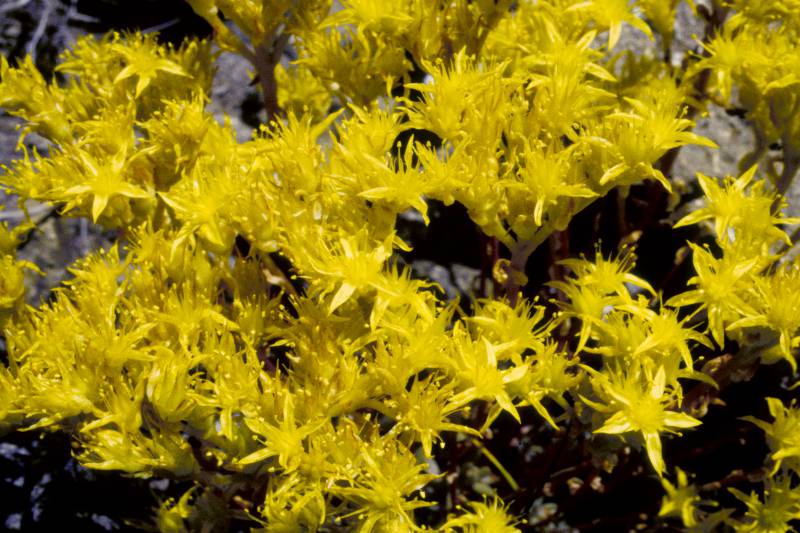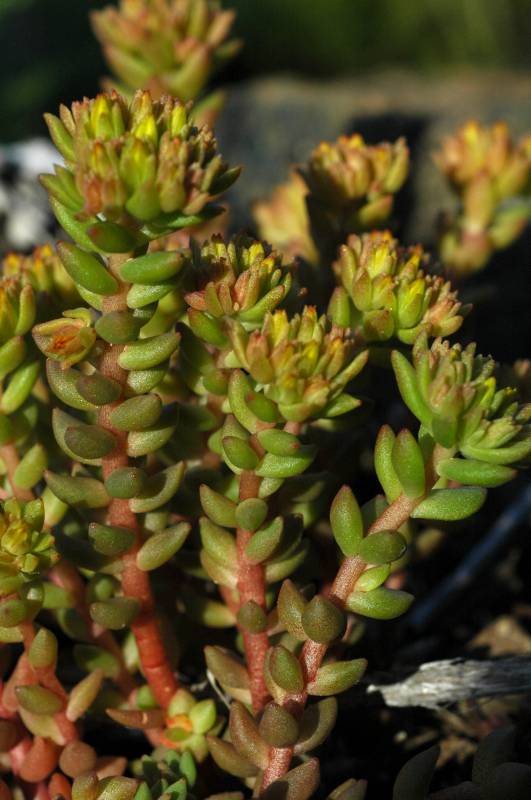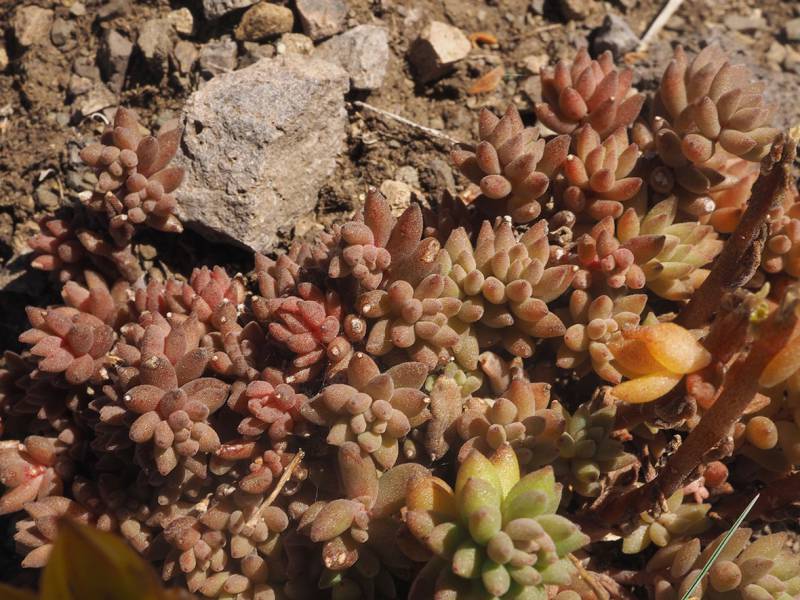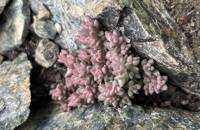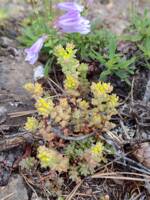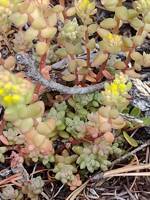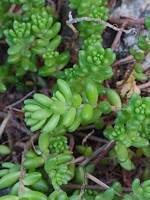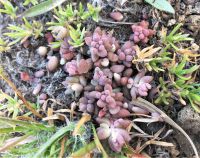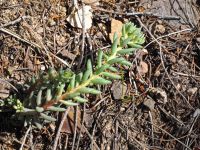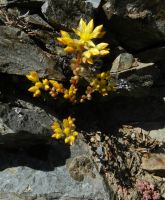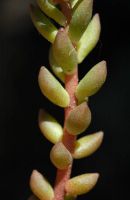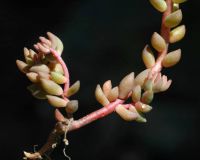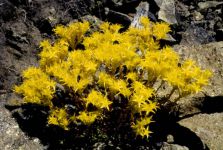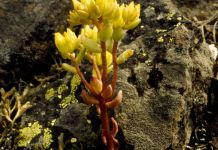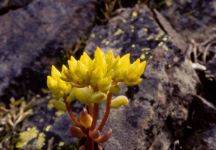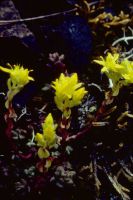Distribution: Occurring east of the Cascades crest in Washington; Washington east to Idaho.
Habitat: Open, exposed places, usually on rocks or in gravelly soil, at moderate elevations in the mountains.
Flowers: June-August
Origin: Native
Growth Duration: Perennial
Conservation Status: Not of concern
Pollination: Bees, flies
Glabrous perennial from rhizomes, with numerous sterile shoots and basal rosettes, the flowering stems 5-20 cm. tall.
Leaves alternate, ovoid to ellipsoid, slightly flattened, 4-9 mm. long, incurved, mostly deciduous by flowering time.
Flowers mostly in compact cymes; sepals 5, triangular-lanceolate, 2-3.5 mm. long; petals 5, yellow, distinct, lanceolate and pointed, 6-7 mm. long; stamens 10, spreading, about 2 mm. shorter than the petals, 5 attached to the base of the petals.
Follicles 5, erect, united at the base, each with a small gland at the base, and tipped by the erect or divergent, tapered style.
Publication: Res. Stud. State Coll. Wash. 2: 125. 1931.
Sedum lanceolatum Torr. var. rupicolum (Jones) Hitchc. [HC]
PNW Herbaria: Specimen records of Sedum rupicola in the Consortium of Pacific Northwest Herbaria database
WA Flora Checklist: Sedum rupicola checklist entry
OregonFlora: Sedum rupicola information
E-Flora BC: Sedum rupicola atlas page
CalPhotos: Sedum rupicola photos

